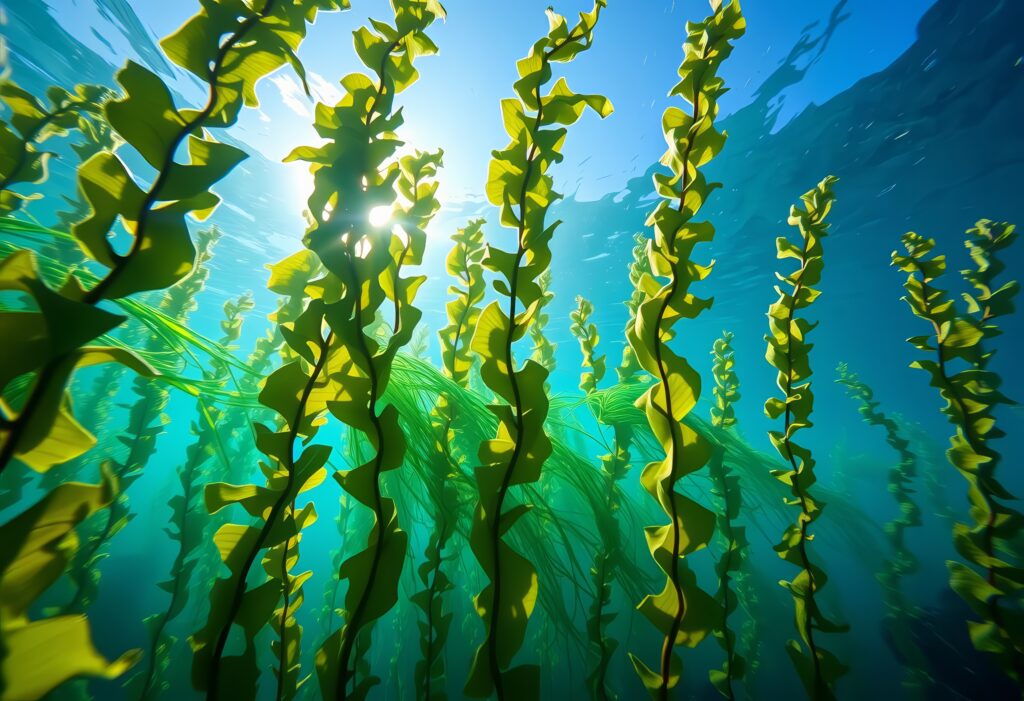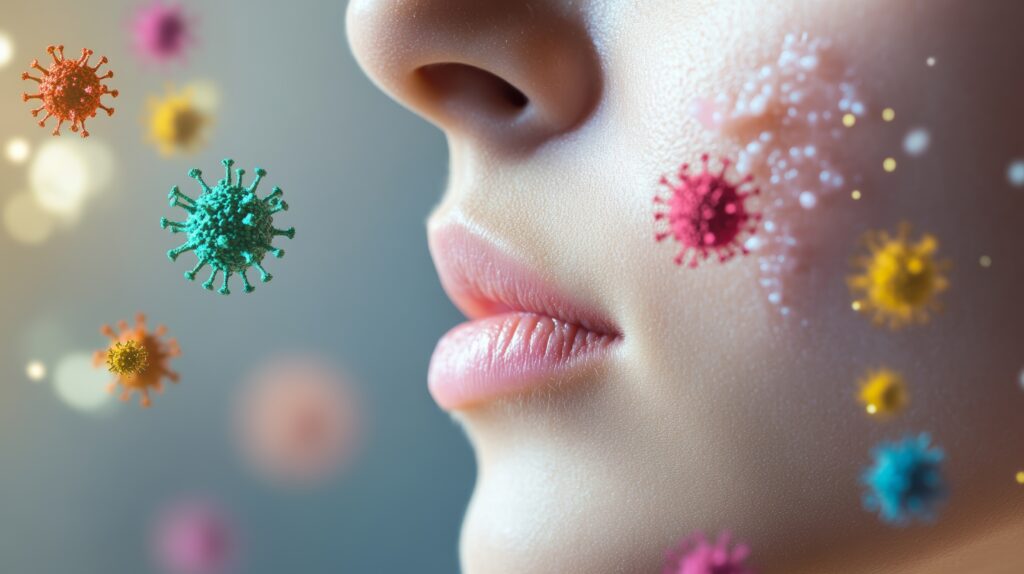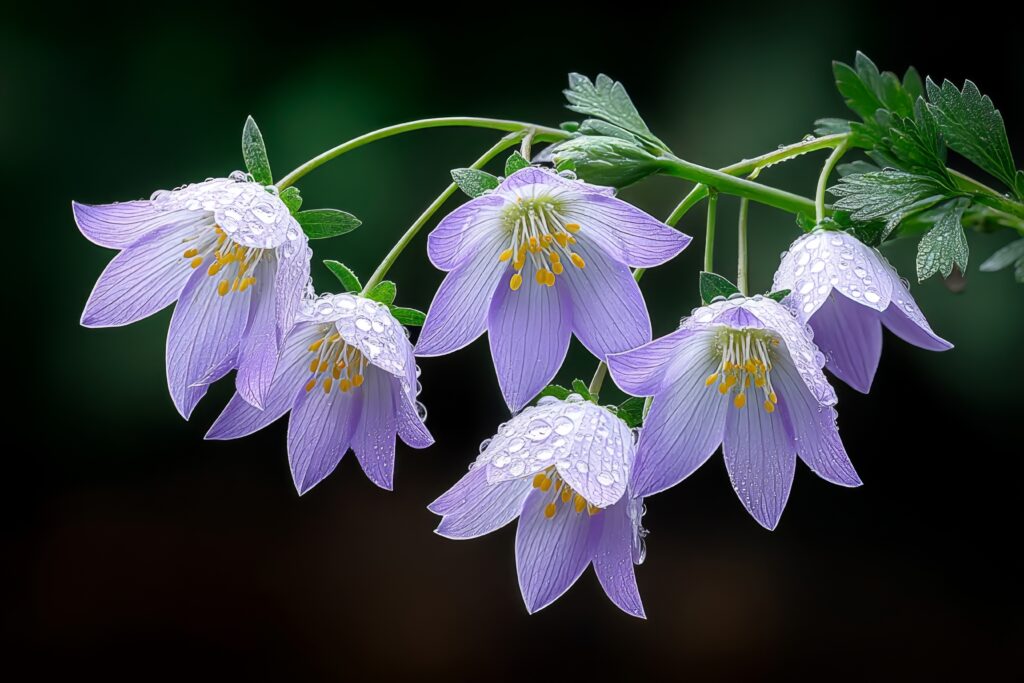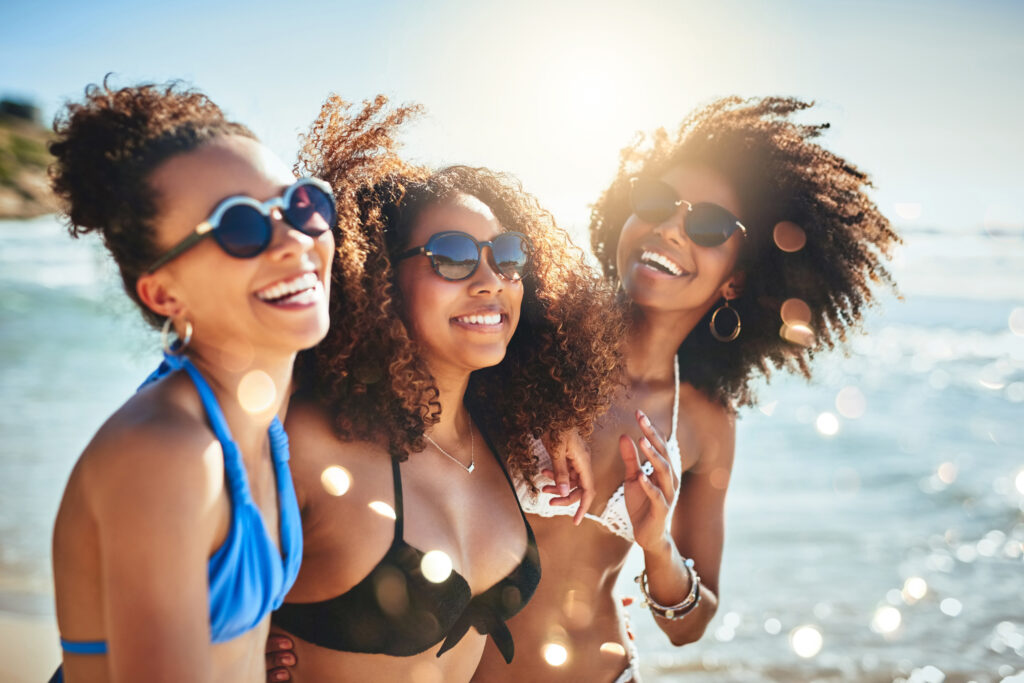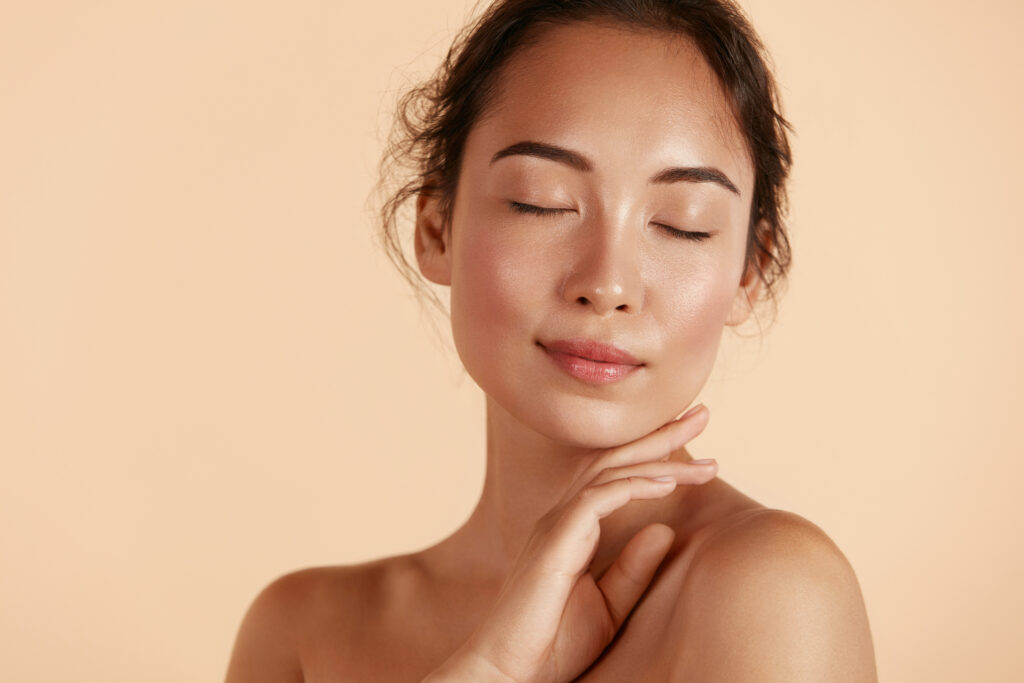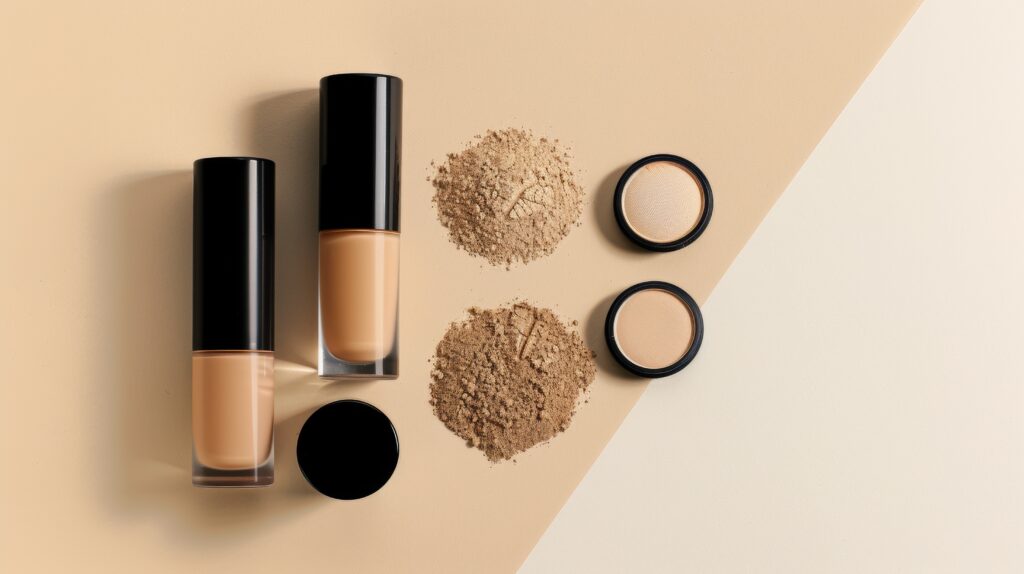The Real SPF Bottleneck for Sensitive Skin
Sensitive-skin sunscreens face a predictable trade-off. Raising SPF typically means pushing UV-filter percentages higher, which can increase viscosity, tack, and the likelihood of irritation from more complex systems. At the same time, formulators are being asked for lighter daily textures—serums, gel-creams, and fluid lotions—that wear invisibly on diverse skin tones. Those constraints collide in the lab: protection must go up while sensory load and potential irritancy go down.
An effective path forward is to improve the efficiency of the protection you already have rather than stacking more filters. One proven approach is to support the skin’s own antioxidant defenses so the film performs more consistently under UV and visible-light stress. Natura-Tec SeaBerry Blue™ was designed around that principle: when the defense side of the equation strengthens, measured SPF can rise without forcing the filter system past tolerability limits. That’s the engineering problem this article tackles—how to lift SPF in sensitive-skin architectures while keeping formulas streamlined, fragrance-free, and comfortable for daily use.
Why “Just Add More Filter” Falls Short
In sensitive-skin bases, formulators typically minimize potential irritants: no fragrance, low or no alcohol, conservative preservation strategies, and simple emulsifier systems. Those decisions improve tolerability but can restrict the toolset available to increase SPF. Mineral-forward options ease some concerns, yet higher pigment loads can create white cast, thickness, and rub-in issues—especially in sheer formats. Dermatology guidance often steers sensitive users toward mineral (zinc oxide/titanium dioxide) sunscreens for tolerability, underscoring the need to hit protection targets within gentler, simpler systems. This is where a low-dose SPF “assist” becomes valuable: it lets you avoid a wholesale re-architecture of the filter system while still moving the number in the right direction (American Academy of Dermatology, n.d.).
Even when a base is well chosen, film behavior under light is an under-appreciated bottleneck. UV exposure and even portions of visible light generate reactive oxygen species (ROS) in the stratum corneum and viable epidermis. That oxidative load can impact barrier lipids and proteins, destabilize the film over wear time, and erode real-world protection. Multiple lines of evidence show that blue light (HEV) induces oxidative stress in keratinocytes and live skin models—meaning daily indoor/outdoor exposure adds pressure that filters alone don’t fully address (Nakashima et al., 2017). For sensitive-skin formats, the implication is practical: if you can moderate photo-oxidative stress at the skin–film interface, you can help the system retain its protective behavior without resorting to higher filter load or complex co-actives that risk tolerability.
Why Antioxidant Support Lifts Measured SPF
There is a strong, peer-reviewed rationale for pairing antioxidants with sunscreens. Reviews across cosmetic science and dermatology report that antioxidants reduce UV-induced oxidative damage and, in certain systems, enhance SPF or photostability versus sunscreen alone (Adeniran-Jesus & Costa, 2023). The mechanism is straightforward: by mitigating photo-oxidative cascades in the upper skin layers and at the film–skin interface, the system retains coverage and performance more consistently during exposure. In other words, better redox control can translate into better instrumented protection.
Two details matter for sensitive-skin design. First, the antioxidant should be effective at low dose, minimizing new irritancy variables. Second, it should be compatible with sheer textures and mineral-forward or avobenzone-free strategies. Carotenoids—particularly astaxanthin from Haematococcus pluvialis microalgae extract—check both boxes. Topical astaxanthin has documented antioxidant and photoprotective effects, with reviews describing reduced UV-induced deterioration and favorable dermatologic endpoints relevant to daily photoprotection (Ito & Saito, 2018; Lima et al., 2021). Beyond UVB, HEV/blue-light stress has been shown to drive oxidative changes in skin; targeted antioxidant systems can mitigate that stress in vitro and ex vivo, supporting a more resilient film over wear time in real conditions of mixed UV/visible exposure (Nakashima et al., 2017).
How Natura-Tec SeaBerry Blue™ Solves the Problem in Practice
Natura-Tec SeaBerry Blue™ operationalizes this strategy in a form that fits sensitive-skin architecture. It is a carotenoid-rich, omega-9-stabilized complex that infuses H. pluvialis extract (astaxanthin) into cranberry seed oil. The composition matters: cranberry seed oil provides a balanced ω-3/ω-6/ω-9 profile and polyphenols, while an omega-9 triglyceride matrix helps stabilize the carotenoid payload—yielding a low-dose, oil-phase addition that integrates cleanly into O/W creams, gel-creams, and daily-wear textures. Because SeaBerry Blue™ operates as a booster rather than a filter, it is particularly suited to minimal, allergen-aware systems that avoid heavy actives and fragrance.
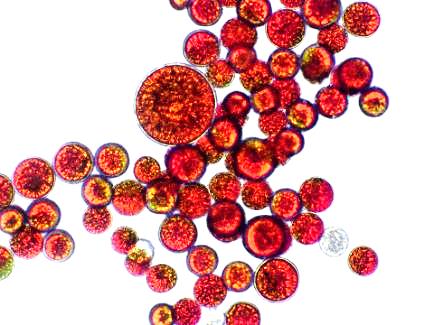
Haematococcus pluvialis
(Astaxanthin)
The richest natural astaxanthin source
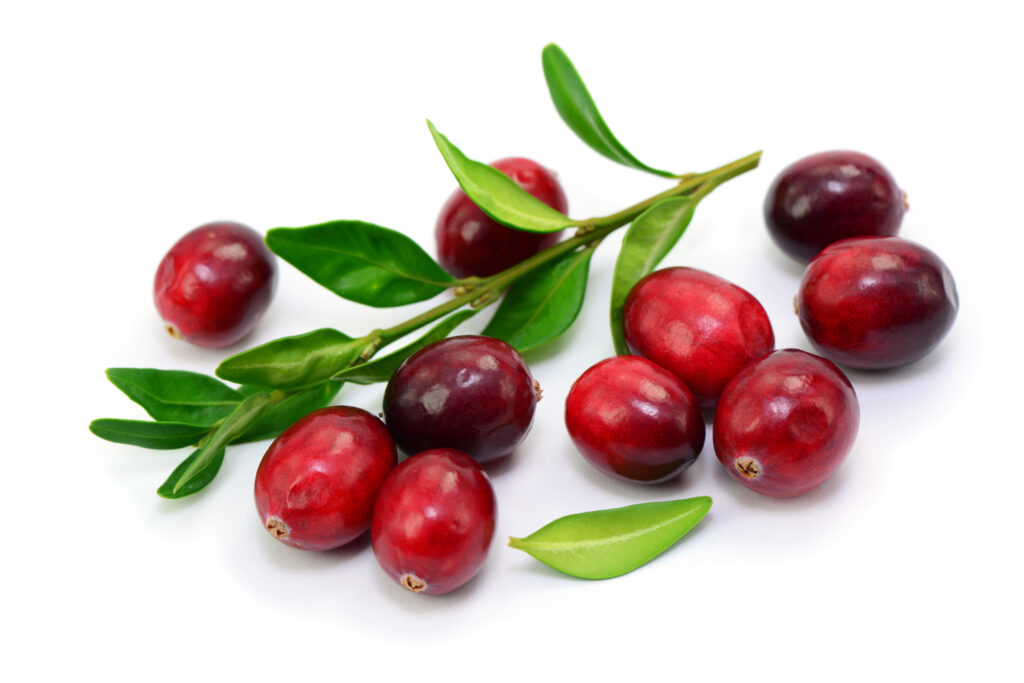
Cranberry Seed Oil
A fantastic by-product from the seeds of the super fruit
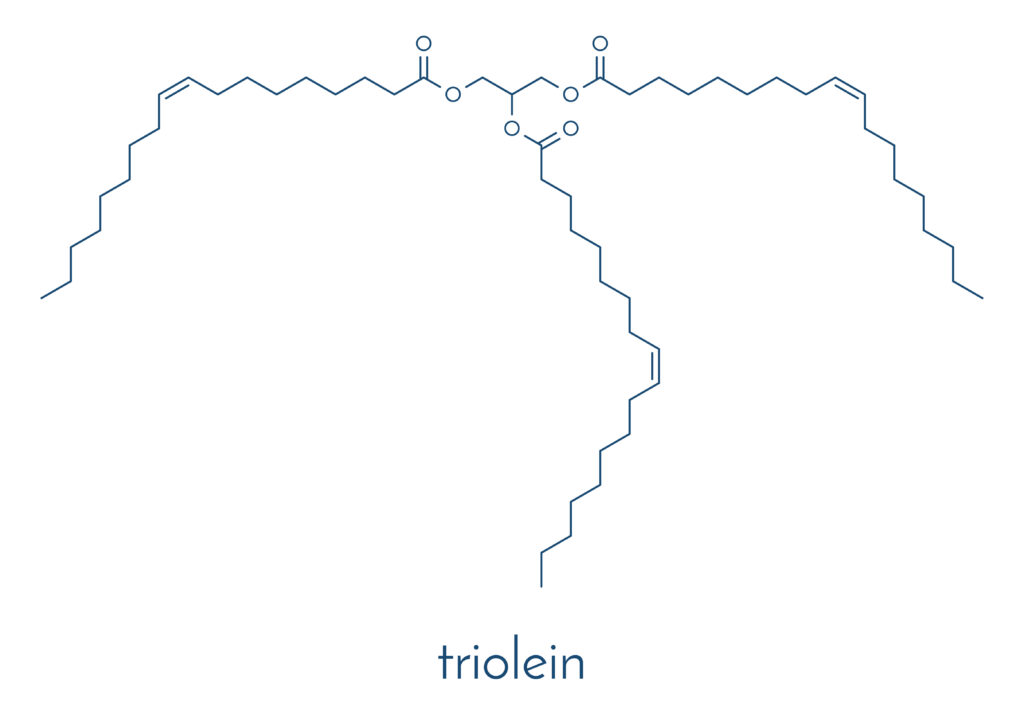
Triolein
An olive oil-like ester
In controlled testing, SeaBerry Blue™ demonstrated two outcomes that are directly relevant to sensitive-skin sunscreen engineering. First, it increased the skin’s endogenous antioxidant production under stress—approximately +28% under blue light and +42% under UVA/UVB at a 2% use level on human skin explants. This provides a biological buffer precisely where the film meets the skin. Second, when incorporated into an SPF-20 O/W sunscreen built with modern organic filters, SeaBerry Blue™ raised the measured SPF to ~25 at 2% and to ~26.3 at 4%, showing a tangible SPF lift without increasing total filter load. For sensitive-skin formulators, those numbers are meaningful: they indicate room to reach the target protection with fewer trade-offs in viscosity, white cast, or preservative pressure.
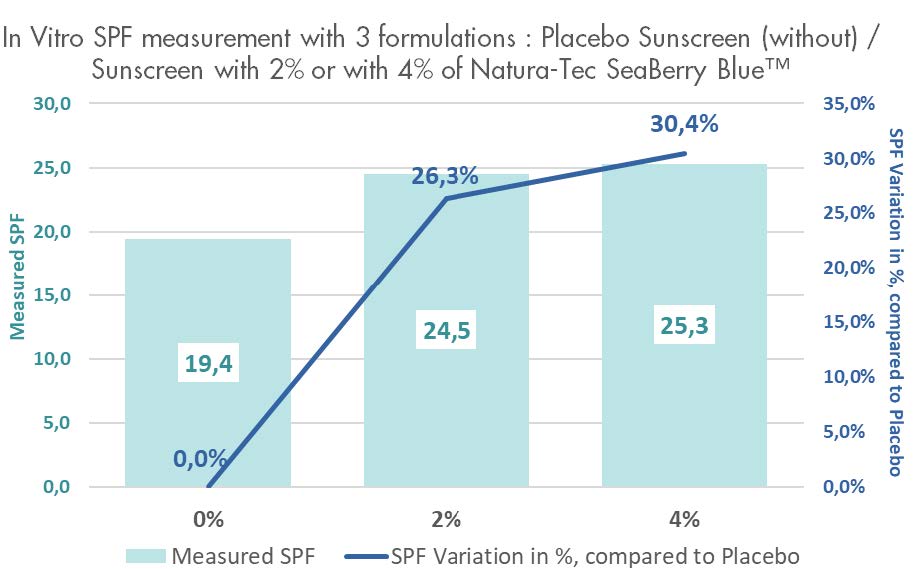
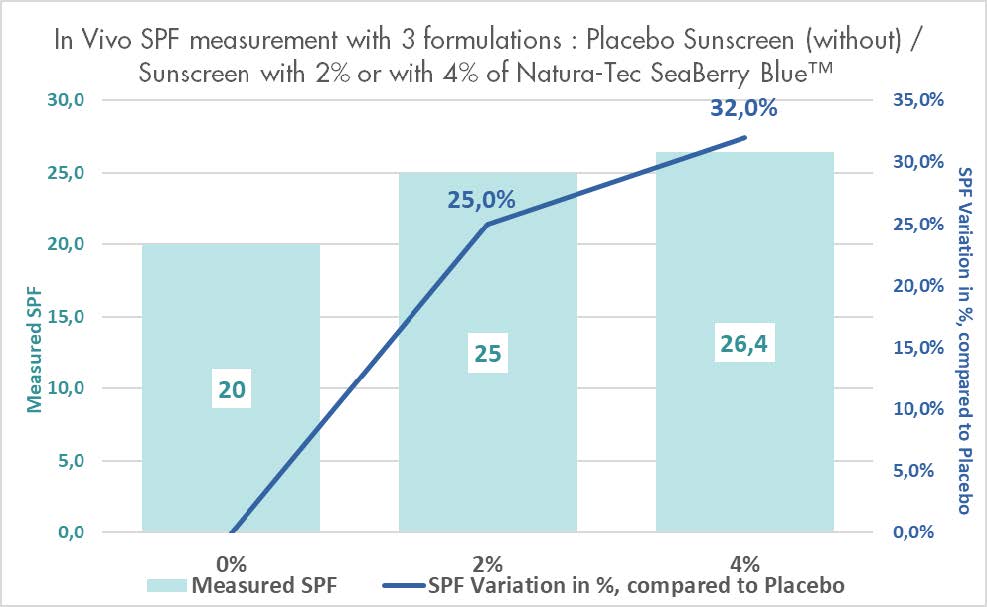
Tolerability is central to the value proposition. Explant safety work reported no significant cytotoxicity at 2–4% under UV and blue-light conditions and no photosensitization signal at formulation-relevant levels. That provides practical reassurance when you are layering SeaBerry Blue™ into preservative-lean, fragrance-free, mineral-forward systems designed for reactive skin.
From Bench to Label
Skin-biomimetic defense, not just scavenging. Rather than serving only as an added “sink” for radicals, SeaBerry Blue™ elevated the skin’s own antioxidant capacity under UV/HEV stress in ex vivo testing. For formulators, the benefit is twofold: maintaining endogenous defenses helps preserve barrier function and film integrity during wear, and it does so at low inclusion levels that are friendlier to sensitive skin.
Film behavior under HEV and UV. Blue-light–induced oxidative stress is well-documented in keratinocytes and live-skin models (Nakashima et al., 2017). SeaBerry Blue™ demonstrated antioxidant elevation under both UV and blue-light conditions, aligning with daily-wear realities where indoor LEDs and screens contribute to oxidative load. While SPF is defined against UVB erythema, curbing HEV-related oxidative drift can help maintain a smoother wear profile and support consistent protection in real use.
Mineral-forward and avobenzone-free strategies. Sensitive-skin portfolios often lean mineral for tolerability. Because SeaBerry Blue™ is a low-dose oil-phase addition, it can be paired with zinc/titanium bases to target SPF increases without compounding pigment load—a route to improved aesthetics (less drag, faster rub-in) while keeping labels fragrance-free and allergen-aware. Dermatology guidance favoring mineral options for sensitive users underscores this direction (American Academy of Dermatology, n.d.).
Evidence chain for claims. The strongest claims connect mechanism to measurement: (1) ex vivo antioxidant stimulation under UV/blue light, (2) in vitro SPF methodology in a standardized base, and (3) in vivo MED/SPF readouts showing lift versus control. The SeaBerry Blue™ data package spans those rungs—an advantage when reviewers ask how a low-dose addition produced a measurable SPF increase in a gentle base (Natura-Tec, data on file). Independently, the broader literature corroborates the approach: antioxidants can complement sunscreen systems, improving photoprotection and, in some formula architectures, raising measured SPF (Adeniran-Jesus & Costa, 2023). Recent studies with phenolic antioxidants (e.g., rosmarinic acid) have shown in vitro and in vivo SPF improvements at low doses—evidence that supports the general concept of “antioxidant co-actives” for higher protection without heavier filter loads (de Oliveira Bispo et al., 2023).
Process and scale. From a manufacturing perspective, SeaBerry Blue™ integrates at 2% in the oil phase with the option to explore 4% depending on sensorial targets. Because the lever is additive—not a filter re-platform—it typically requires less process change than rebuilding your UV screen, which can accelerate the loop from bench to pilot to clinical. That also simplifies documentation and reduces the risk of rheology drift that often accompanies higher filter solids.
Sensitive Skin, Better Wear, Fewer Trade-offs
For sensitive-skin users, tolerability is non-negotiable. Mineral-forward and fragrance-free systems remain foundational, but formulators also need to deliver modern aesthetics and high protection. SeaBerry Blue™ gives you a credible, test-backed route to measurable SPF lift without escalating filter load. It preserves the minimalist philosophy—simple emulsifiers, conservative preservation, no fragrance—while providing a practical, low-dose path to stronger numbers. In a category where claim language must remain precise, grounding the story in antioxidant biology and standard methods positions your launch for smoother regulatory review and faster internal alignment.
There’s also a development efficiency angle. Because SeaBerry Blue™ sits cleanly in the oil phase and operates at low inclusion levels, it tends to demand fewer formulation concessions than high solids or complex co-actives. That can shorten iteration cycles (stability → scale-up → clinical), reduce batching risk, and keep documentation straightforward—key advantages for lean teams working against launch calendars. In short, it’s a competitive solution to the central problem: designing high-SPF sunscreens that stay gentle on reactive skin.
High-SPF and Sensitive Skin Can Coexist
Raising SPF in sensitive-skin sunscreens doesn’t have to mean heavier filters, thicker films, or longer reformulations. By strengthening the skin–film defense with Natura-Tec SeaBerry Blue™, you can deliver measurable SPF lift while preserving the minimalist, allergen-aware profile your users require. The data connect the dots: biologically relevant antioxidant support under UV and HEV stress, improved measured SPF in realistic bases, and safety at formulation-level use. This is a practical, defensible route to “high-SPF, low-irritancy” design—and a competitive edge in daily-wear photoprotection.
Pilot a Higher-SPF, Sensitive-Skin Build With Us
Ready to test this approach in your base? Send a request through our website or contact your dedicated sales manager for sample, bench protocol, and claim-support details. We’ll help you translate the method into results—quickly and cleanly.
- Adeniran-Jesus, R., & Costa, A. (2023). Antioxidants in sunscreens: Which and what for? Pharmaceutics, 15(2), 233. https://pmc.ncbi.nlm.nih.gov/articles/PMC9854756/
- American Academy of Dermatology. (n.d.). Sunscreen FAQs. Retrieved September 22, 2025, from https://www.aad.org/media/stats-sunscreen
- de Oliveira Bispo, M., Vieira, D. A., de Paiva, M. M. A., et al. (2023). Photoprotective efficacy of the association of rosmarinic acid and sunscreen filters. Cosmetics, 10(1), 11. https://www.mdpi.com/2079-9284/10/1/11
- Ito, N., & Saito, H. (2018). The protective role of astaxanthin for UV-induced skin deterioration in healthy people. Nutrients, 10(11). https://pmc.ncbi.nlm.nih.gov/articles/PMC6073124/
- Lima, S. G. M., Cavalcanti de Araújo, M., et al. (2021). Astaxanthin delivery systems for skin application: A review. Pharmaceutics, 13(10). https://pmc.ncbi.nlm.nih.gov/articles/PMC8471810/
- Nakashima, Y., et al. (2017). Blue light-induced oxidative stress in live skin. Free Radical Biology and Medicine, 108, 300–310. https://www.sciencedirect.com/science/article/abs/pii/S089158491730134X
Note: All scientific and trade sources cited are publicly accessible and were selected to support the technology-level argument for SPF boosting in sensitive-skin systems (antioxidant rationale, HEV/UV oxidative stress, and formulation relevance). Product-specific dossiers from Natura-Tec SeaBerry Blue™ provide the detailed methods, use levels, and performance data (ex vivo/in vitro/in vivo) referenced here; rely on those documents for final claim wording during regulatory/legal review.


